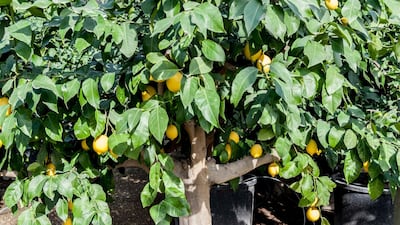Truly immortal children's characters are those who transport but also transcend. Not only do they chime with young readers around the world, they continue to strike a chord with us in adulthood.
The Little Prince, Heidi, Pippi Longstocking and Tom Sawyer captivate all ages both within and beyond their native lands. Peter Pan appeals to everyone everywhere with a simple, universal message: make the most of youthful adventures and, if possible, don’t grow up.
In 1968, one such literary character was born in Brazil. Based on the author's own childhood in Rio de Janeiro, José Mauro de Vasconcelos's My Sweet Orange Tree relates the scraps, the scrapes, the wisdom and the perseverance of a 5-year-old tearaway Zezé.
The novel was a phenomenal success at home. Since its publication it has been adapted for television, cinema and theatre, and has become something of a classic. It has gone on to magic the world, selling millions of copies in 19 languages including Turkish, Thai and Korean.
There is one notable exception. For more than 40 years the book has been out of print in English. But Pushkin Press has rectified that by reissuing it in an elegant new translation by Alison Entrekin.
Although originally written as a novel for children, this is a book that can be read on two levels, exploring as it does both the innocence of childhood and the cruel blows of fate.
New readers, young and old, will delight in the beautifully bittersweet tale. Zezé lives with his family in Bangu, a poor district on the outskirts of Rio. They lead a hardscrabble existence.
His father has lost his job. His mother works the looms at the English Mill until all hours. Older sister Lalá toils at a factory which for Zezé is “a dragon that gobbled up people every morning and spewed them out, very tired, at night”.
For his part, Zezé earns pocket money as a shoeshine. He whiles away the rest of his time by playing either games in the backyard with his little brother Luís or plays pranks on unsuspecting family members and neighbours.
These pranks include setting fire to fences and hammocks, smashing street lights with his slingshot, and making a neighbour’s cat swallow a marble.
When he crosses the line and his naughtiness becomes “devil’s work” he receives a “paddling” from an angry parent with a flip-flop. But then he starts school and this “devil’s godson” shows his angelic side through random acts of kindness – sharing food with a classmate who is poorer than him or stealing flowers to give to his teacher.
Two very different friends turn Zezé’s life around. The first is the eponymous orange tree which stands in the garden of the family’s new house, and becomes if not a conversation partner then a good, solid sounding-board.
The second is a rich Portuguese man – given the childish nickname “Portuga” – who takes Zezé under his wing, allows him to “piggyback” on the back of his car, and instils in him a much needed sense of self-worth.
_____________________
Read more:
Book review: Women’s stories and wordplay abound in Ibrahim Nasrallah's Gaza Weddings
Book review: Biography of Marjorie Hillis is a fascinating account of women’s empowerment
Book review: 'A Cat, a Man and Two Women' a gentle story told with dexterity
_____________________
My Sweet Orange Tree is rich in charm and tenderness. In places it veers towards the sentimental and whimsical but is always saved in time by the release of carefully accrued tension or pathos. Those sunnier episodes or frivolous escapades are counterbalanced with shocks, disappointments and violence.
Many physical punishments are doled out (one chapter is entitled “Two Memorable Beatings”), including a particularly heavy-handed corrective measure which leaves Zezé unconscious.
A cancelled Christmas due to the family’s financial woes results in keenly felt sorrow and resentment. An out-of-the-blue tragedy in the book’s final act manages to floor both its hero and reader.
Zezé narrates the novel and also carries it. While his antics prove relentlessly entertaining it is his mindset that keeps us emotionally invested. For all his precociousness, he regularly questions older siblings about the ways of the world (“are children retired?”) and finds himself routinely thwarted by adult logic.
Why, he wonders, can’t Portuga buy him from his father? “I’d be one less mouth for them to feed.”
He shares gimlet-eyed observations (the winking candles in a church “made the saints wink too”) and a range of skewed assumptions.
“Funny thing was, she had a man’s moustache,” Zezé notes. “She must have been the headmistress because
of that.” Or: “No one had taken a single flower to my teacher, Dona Cecília Paim. It must have been because she was ugly.”
We gradually come to agree with Portuga that Zezé is “a complicated little chap” but an endearing one too.
There is the odd blemish: what does it mean to be "supping on the same tattered sadness"? Otherwise My Sweet Orange Tree is a near-perfect child's-eye view of life, one that has the power to both warm and break hearts, whatever the age of the reader.

